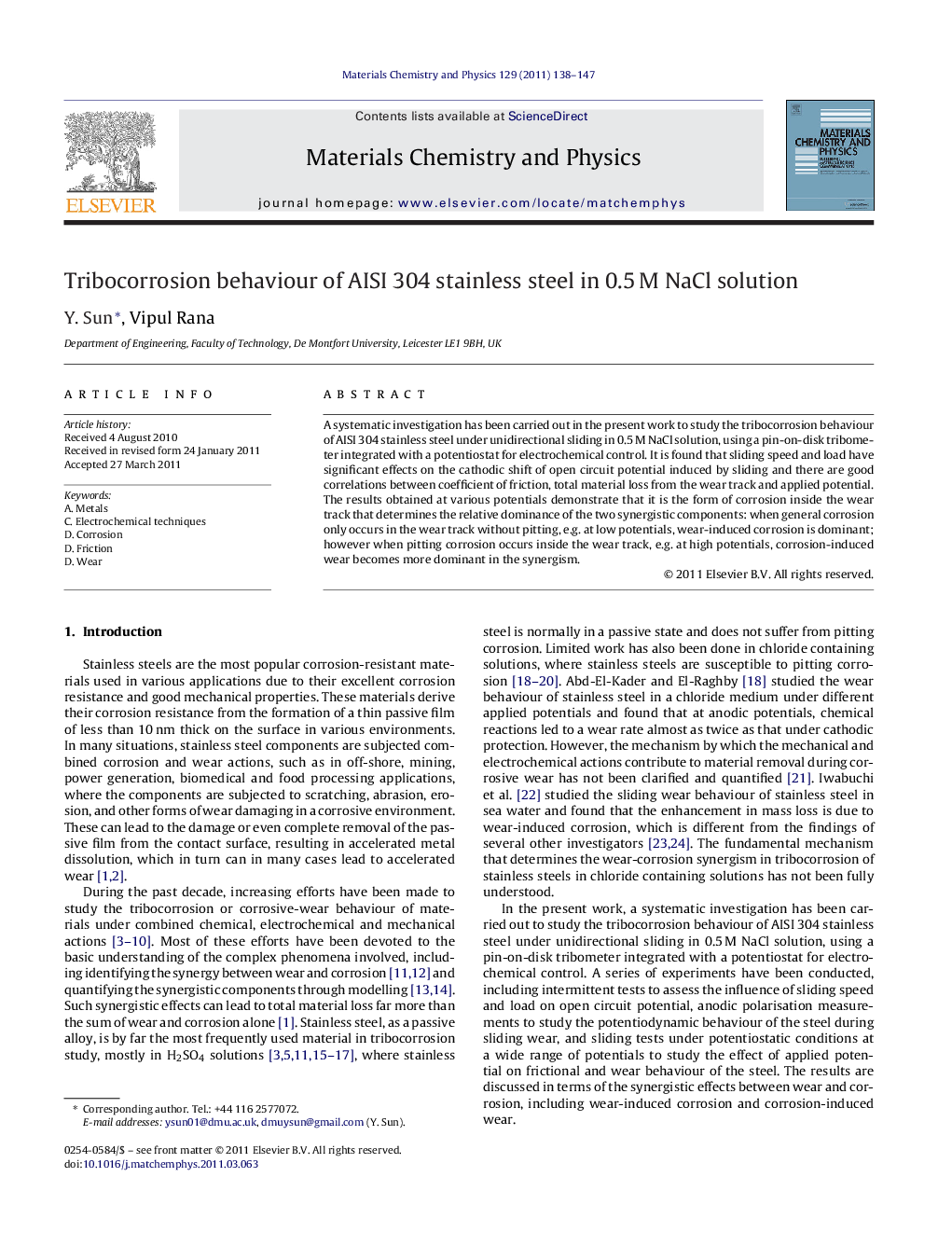| Article ID | Journal | Published Year | Pages | File Type |
|---|---|---|---|---|
| 1524506 | Materials Chemistry and Physics | 2011 | 10 Pages |
A systematic investigation has been carried out in the present work to study the tribocorrosion behaviour of AISI 304 stainless steel under unidirectional sliding in 0.5 M NaCl solution, using a pin-on-disk tribometer integrated with a potentiostat for electrochemical control. It is found that sliding speed and load have significant effects on the cathodic shift of open circuit potential induced by sliding and there are good correlations between coefficient of friction, total material loss from the wear track and applied potential. The results obtained at various potentials demonstrate that it is the form of corrosion inside the wear track that determines the relative dominance of the two synergistic components: when general corrosion only occurs in the wear track without pitting, e.g. at low potentials, wear-induced corrosion is dominant; however when pitting corrosion occurs inside the wear track, e.g. at high potentials, corrosion-induced wear becomes more dominant in the synergism.
► The tribocorrosion behaviour of AISI304 stainless steel was studied in 0.5 M NaCl solution. ► Open circuit potential decreases with increasing sliding speed and contact load. ► Coefficient of friction decreases and total wear volume increases with potential. ► Sliding accelerates pitting corrosion inside the wear track, which in turn leads to accelerated wear.
